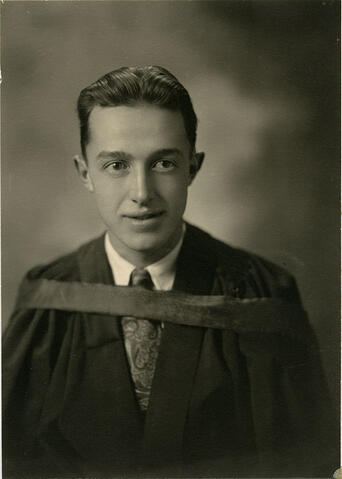
Zone du titre et de la mention de responsabilité
Titre propre
David S. Kirkbride - Portrait
Dénomination générale des documents
- Document graphique
Titre parallèle
Compléments du titre
Mentions de responsabilité du titre
Notes du titre
Niveau de description
Pièce
Cote
Zone de l'édition
Mention d'édition
Mentions de responsabilité relatives à l'édition
Zone des précisions relatives à la catégorie de documents
Mention d'échelle (cartographique)
Mention de projection (cartographique)
Mention des coordonnées (cartographiques)
Mention d'échelle (architecturale)
Juridiction responsable et dénomination (philatélique)
Zone des dates de production
Date(s)
-
[1937?] (Production)
Zone de description matérielle
Description matérielle
1 photograph : b&w ; 11 x 15.5 cm
Zone de la collection
Titre propre de la collection
Titres parallèles de la collection
Compléments du titre de la collection
Mention de responsabilité relative à la collection
Numérotation à l'intérieur de la collection
Note sur la collection
Zone de la description archivistique
Nom du producteur
Historique de la conservation
Portée et contenu
Head and shoulders image of David S. Kirkbride, all-around Huskie athlete, in academic robes.
Bio/Historical Note: David Spencer Kirkbride was born in 1913 in Calgary. He graduated from Central Collegiate in Regina, winning the Governor General’s Bronze Medal, then attended the University of Saskatchewan from 1930-1937, where he earned a BE in civil engineering (1934) and an MSc (1937) in structural engineering. He was a member of five Huskie track & field teams, four of which captured the Cairns Trophy as WCIAU champions. He was manager of the track & field team for one year and captain another. He competed in sprints, hurdles, relay and pole vault. Kirkbride also competed in other sports, including as a forward on the basketball team for four years and captain for two. He competed in backstroke on the swim team. For his achievements, Kirkbride received a Major Athletic Award. He served as the first president of the Men's Athletic Directorate and was president of the Huskies hockey team, both during 1934-1935.
Dr. C.J. Mackenzie, former dean of Engineering at the University of Saskatchewan, was in charge of constructing a reinforced concrete bridge across the North Saskatchewan River at Borden during the Depression. He realized the need for the application of soil mechanics technology to the design of bridge foundations. One of Mackenzie’s brightest graduate students was Kirkbride. Who worked on the project between 1935-1937. Upon graduation that same year and finding no employment in Saskatchewan, Kirkbride obtained work with Monsarret and Pratley, bridge engineers in Montreal, but when that job petered out, he moved on to Canadian Industries Limited (CIL) in that city to work as a draftsman. Kirkbride became aware of the developments taking place in soil mechanics and foundation engineering. He approached the leading foundation firm in Canada, the Foundation Company in Montreal, proposing that they should employ him, sponsor his graduate training at Harvard, and thereby gain the benefit of soil mechanics knowledge on his return. But they were skeptical of the practical application of the new science, and nothing came of this. Nevertheless, Kirkbride applied to Harvard Graduate School, obtained a scholarship, and in 1938-1939 became the first Canadian to earn an MA in soil mechanics. Upon graduation, Kirkbride tried to persuade the Dean of Engineering at McGill University to introduce soil mechanics into their teaching program, but at the time the Dean didn’t appreciate that the subject was worthwhile. However the PFRA was planning some larger dam projects and Dr. Mackenzie was influential in persuading this organization that they should utilize the soil mechanics training that Kirkbride had acquired at Harvard. He was hired on staff as a junior engineer. Kirkbride worked for the PFRA only from his graduation in June through October 1939. During this short period he set up the first elementary wash-bore drilling equipment used to augment the digging of test pits and the boring of auger holes, the methods heretofore used which were limited in depth. Kirkbride also recommended to management the need for laboratory facilities, and gave some preliminary soil mechanics advice on a few dam sites. War came in September 1939, and knowing that PFRA activities would be curtailed during the war, Kirkbride returned to CIL to work in the war effort with its wartime counterpart Defence Industries Limited (DIL). Kirkbride spent the remainder of his substantial career with DIL and CIL, first in the engineering department, which greatly expanded in the war, then as resident engineer on the Atomic Energy Plant at Chalk River, Ontario. After the war, Kirkbride took on senior management roles with CIL, ending his career in the late 1970s as vice-president for Western Canada. David Kirkbride died in 1995.
Zone des notes
État de conservation
Source immédiate d'acquisition
Classement
Langue des documents
Écriture des documents
Localisation des originaux
Disponibilité d'autres formats
Restrictions d'accès
Délais d'utilisation, de reproduction et de publication
Other terms: Responsibility regarding questions of copyright that may arise in the use of any images is assumed by the researcher.

